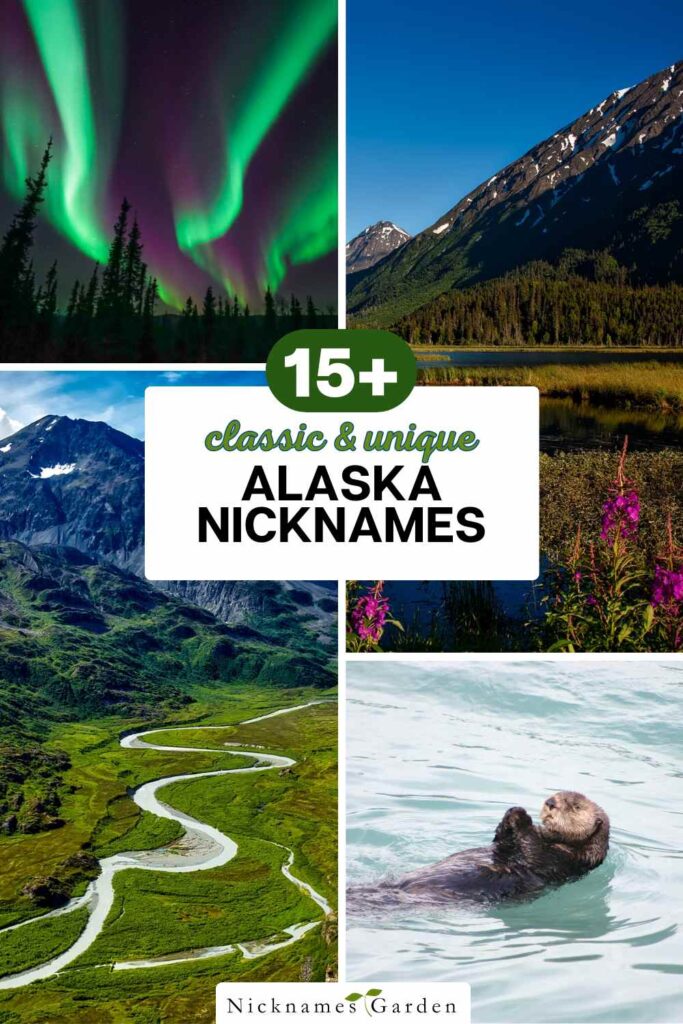Explore the rich tapestry of Alaska’s nicknames, from “The Last Frontier” to “The Land of the Midnight Sun.”
Discover their origins, meanings, and cultural significance in this ultimate guide.
Historical and Geographic Context
Understanding the historical and geographic context of Alaska is essential to appreciating its diverse and meaningful nicknames.
From its rich history to its unique geographic features, Alaska’s monikers are deeply intertwined with its identity.
Alaska’s History and Its Influence on Nicknames
Russian Colonization:
- “Russian America”: Before it became part of the United States, Alaska was known as Russian America, reflecting its colonial past.
- Historical significance: Russian exploration and trade heavily influenced the culture and nomenclature of early Alaska.
Purchase by the United States:
- “Seward’s Folly”: Named after Secretary of State William H. Seward, who orchestrated the purchase of Alaska from Russia in 1867. Initially seen as a foolish acquisition, the nickname evolved into a term of endearment and pride as Alaska’s value became apparent.
Statehood:
- Transition to Statehood: In 1959, Alaska became the 49th state of the USA. This milestone brought a new wave of nicknames reflecting its newfound status.
Geographic Features and Climate Affecting Nicknames
Vast Wilderness:
- “The Last Frontier”: This nickname highlights Alaska’s vast, uncharted wilderness and its role as the final American frontier.
- “The Great Land”: Derived from the Aleut word “Alyeska,” meaning “great land,” this nickname celebrates Alaska’s immense and varied landscapes.
Climate Phenomena:
- “The Land of the Midnight Sun”: Refers to the extended daylight hours experienced during the summer months, especially above the Arctic Circle.
- “The Frozen North”: A playful yet descriptive nickname reflecting the cold, icy conditions prevalent in much of the state.
Unique Geographic Landmarks:
- Denali (Mount McKinley): Known as “The High One” in native Athabascan, Denali is North America’s tallest peak and a symbol of Alaskan grandeur.
- Glaciers and Fjords: The state’s numerous glaciers and stunning fjords contribute to nicknames like “Glacier State” and “Icebox of the Nation.”
Native Alaskan Influence on State Nicknames
Cultural Heritage:
- Native Tribes: The diverse native tribes of Alaska, including the Inuit, Aleut, and Athabascan peoples, have contributed significantly to the state’s cultural tapestry and its nicknames.
- Language Contributions: Many of Alaska’s nicknames have roots in native languages, reflecting the state’s indigenous heritage.
Integration into Modern Culture:
- Enduring Legacy: Native influences remain strong in modern Alaskan culture, from place names to everyday terminology.
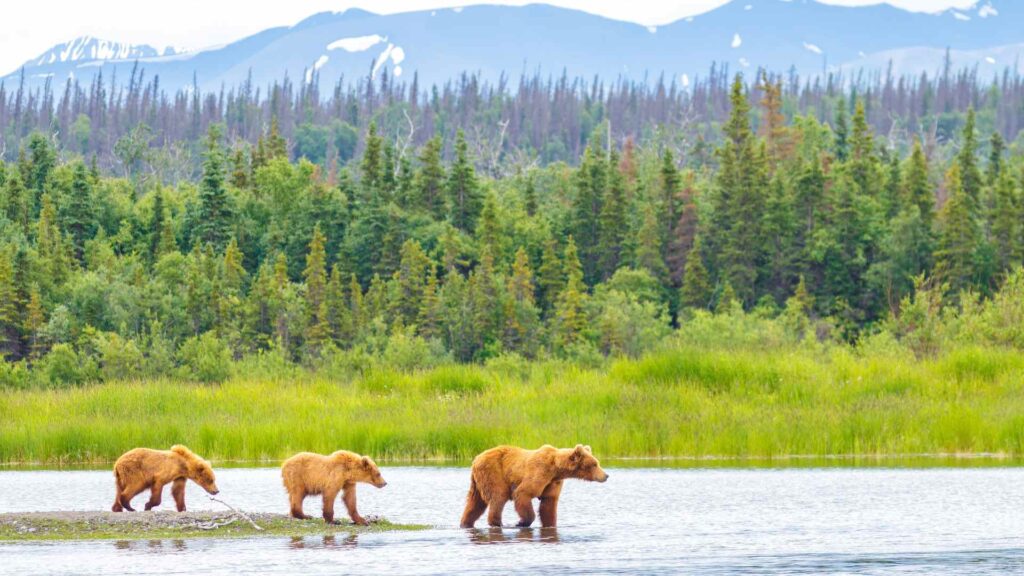
State Nicknames
Alaska’s state nicknames are rich with history and significance, each telling a unique story about the land, its people, and its cultural heritage.
Here, we delve into some of the most popular and enduring nicknames for the state of Alaska.
The Last Frontier
Origin and Meaning:
- Historical Context: This nickname emerged in the early 20th century when much of Alaska remained unexplored and uncharted by non-native settlers. It emphasized the state’s status as the final untamed region of the United States.
- Symbolism: It symbolizes adventure, the spirit of exploration, and the rugged, untouched wilderness that defines Alaska.
Modern Usage:
- Tourism and Branding: “The Last Frontier” is widely used in tourism campaigns, evoking images of pristine landscapes and adventure.
- Cultural Resonance: It continues to resonate with both residents and visitors, representing the enduring allure of Alaska’s wild and beautiful terrain.
The Land of the Midnight Sun
Explanation of the Phenomenon:
- Natural Occurrence: This nickname refers to the natural phenomenon where the sun remains visible at midnight during the summer months, particularly above the Arctic Circle.
- Geographic Relevance: Regions like Barrow (Utqiaġvik) experience continuous daylight for several weeks during the summer solstice.
Cultural Significance:
- Celebrations and Festivals: Many communities celebrate the Midnight Sun with festivals, sports events, and cultural gatherings.
- Tourism Appeal: The phenomenon draws visitors from around the world, eager to experience the unique extended daylight.
Seward’s Folly
Historical Background:
- Purchase of Alaska: In 1867, U.S. Secretary of State William H. Seward purchased Alaska from Russia for $7.2 million. At the time, the deal was mocked as “Seward’s Folly,” “Seward’s Icebox,” and “Andrew Johnson’s Polar Bear Garden.”
- Initial Skepticism: Many Americans saw the purchase as a waste of money, believing the land to be barren and worthless.
Transition to Pride:
- Discovery of Resources: The discovery of gold, oil, and other valuable resources in Alaska transformed public opinion, turning the derisive nickname into a term of pride and accomplishment.
- Historical Reflection: Today, “Seward’s Folly” is a reminder of the strategic and economic foresight behind the acquisition.
The Great Land
Origins in Native Languages:
- Aleut Influence: The name “Alaska” itself is derived from the Aleut word “Alyeska,” meaning “great land” or “mainland.”
- Cultural Roots: This nickname acknowledges the state’s native heritage and the vast, diverse landscapes that define it.
Modern-Day Usage:
- Recognition and Respect: “The Great Land” is a respectful nod to Alaska’s native peoples and their deep connection to the land.
- State Pride: It encapsulates the pride Alaskans feel for their home’s natural beauty and cultural richness.
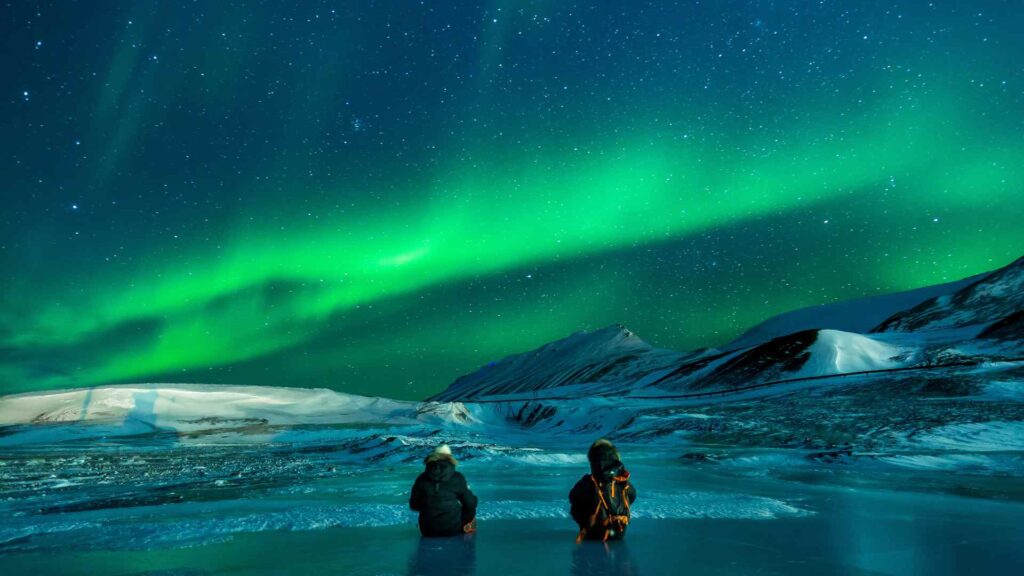
City and Town Nicknames
Alaska’s cities and towns each have their own unique charm and identity, often reflected in their nicknames.
These monikers provide insights into the local culture, history, and geography of these places.
Anchorage
Air Crossroads of the World:
- Origin: Anchorage earned this nickname due to its strategic location for international air travel. It serves as a key refueling stop for flights between Asia and North America.
- Significance: This nickname highlights Anchorage’s importance in global aviation and its role as a hub for international commerce.
The City of Lights and Flowers:
- Meaning: Reflects the city’s efforts to beautify the urban environment, particularly through its extensive flower displays and holiday light decorations.
- Cultural Impact: Anchorage’s commitment to aesthetics and community spirit is celebrated through this nickname.
Fairbanks
Golden Heart City:
- Historical Context: Fairbanks is known as the “Golden Heart City” due to its central location in Alaska and its historical significance during the Gold Rush era.
- Symbolism: This nickname represents the city’s warm and welcoming community, as well as its rich mining history.
Gateway to the Arctic:
- Geographic Relevance: As one of the northernmost cities in Alaska, Fairbanks serves as a starting point for expeditions into the Arctic.
- Exploration and Adventure: This nickname underscores Fairbanks’ role in Arctic exploration and its strategic importance in accessing the northernmost regions.
Juneau
Little San Francisco:
- Comparison: Juneau is often compared to San Francisco due to its hilly terrain and coastal location.
- Cultural Resonance: The nickname reflects Juneau’s vibrant arts scene, diverse population, and picturesque setting.
City on the Edge of Forever:
- Inspirational Meaning: Evokes a sense of timeless beauty and endless possibility.
- Geographic Significance: Highlights Juneau’s remote location and stunning natural surroundings, which seem to exist on the edge of the known world.
Nome
The City of the Golden Beaches:
- Historical Background: Nome became famous during the Gold Rush for its sandy beaches where prospectors found gold.
- Enduring Legacy: This nickname celebrates Nome’s rich mining history and its enduring allure for treasure seekers.
Barrow (Utqiaġvik)
Top of the World:
- Geographic Extremity: As the northernmost city in the United States, Barrow is often referred to as the “Top of the World.”
- Cultural Significance: This nickname underscores the city’s unique position and its cultural significance within the Arctic region.
Sitka
Paris of the Pacific:
- Historical Reference: In the late 19th and early 20th centuries, Sitka was considered a cultural and social hub, much like Paris.
- Artistic and Cultural Vibe: The nickname reflects Sitka’s rich cultural heritage, vibrant arts scene, and historical importance.
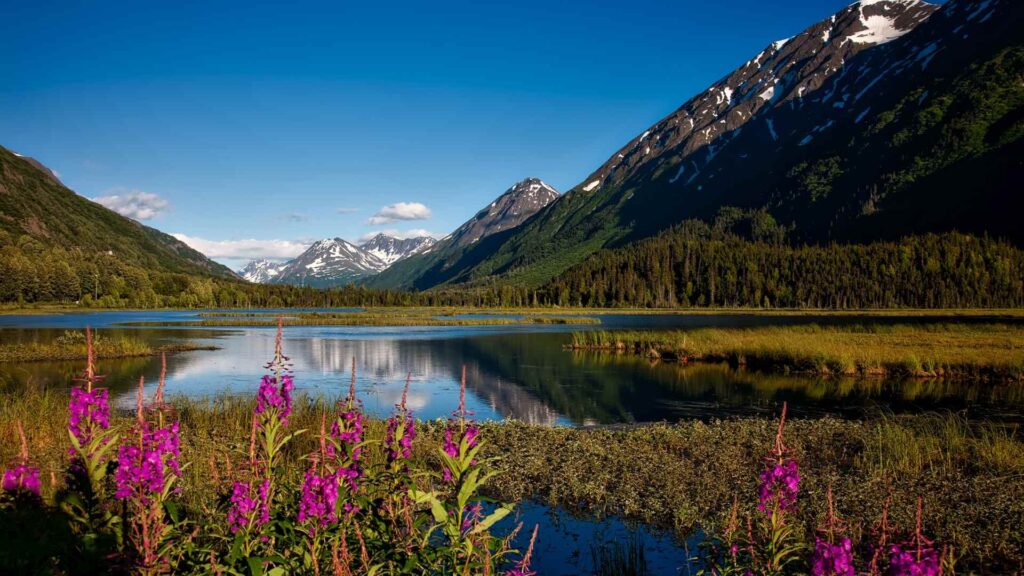
Natural and Cultural Landmarks
Alaska is home to a wealth of natural and cultural landmarks that have inspired a variety of nicknames.
These monikers often highlight the state’s breathtaking landscapes, significant historical sites, and unique cultural features.
Denali (Mount McKinley)
The High One:
- Athabascan Origins: Denali means “The High One” or “The Great One” in the native Athabascan language, reflecting the mountain’s towering presence.
- Historical Significance: Renamed Mount McKinley in 1896 after President William McKinley, the mountain was officially reverted to its native name, Denali, in 2015.
- Symbol of Grandeur: As North America’s tallest peak, Denali stands as a symbol of Alaska’s majestic and untamed wilderness.
Glaciers and Parks
Glacier State:
- Abundance of Glaciers: Alaska boasts more than 100,000 glaciers, making “Glacier State” an apt nickname.
- Tourism Appeal: Glaciers like Mendenhall, Hubbard, and Columbia attract tourists from around the world, contributing to the state’s identity.
Icebox of the Nation:
- Cold Climate: Reflecting Alaska’s cold climate, especially in winter, this nickname emphasizes the state’s frigid temperatures.
- Cultural Impact: The nickname is often used in a playful manner, highlighting the extreme conditions that residents endure and celebrate.
The Iditarod
The Last Great Race on Earth:
- Historic Roots: The Iditarod Trail Sled Dog Race commemorates the 1925 serum run to Nome, where dog sled teams delivered diphtheria antitoxin during a deadly outbreak.
- Cultural Significance: This nickname underscores the Iditarod’s reputation as a grueling and prestigious race that tests the limits of human and canine endurance.
- Global Recognition: The race attracts mushers and spectators from around the world, further cementing Alaska’s adventurous spirit.
Aurora Borealis
Aurora Land:
- Natural Phenomenon: The Northern Lights, or Aurora Borealis, are a spectacular natural light display visible in Alaska’s night skies, especially during winter.
- Cultural and Touristic Importance: The nickname “Aurora Land” highlights Alaska as one of the best places in the world to witness this mesmerizing phenomenon.
Kenai Peninsula
Alaska’s Playground:
- Recreational Activities: Known for its abundant recreational opportunities, including fishing, hiking, and wildlife viewing, the Kenai Peninsula is often referred to as “Alaska’s Playground.”
- Tourism Hub: This nickname draws attention to the peninsula’s popularity among both locals and tourists seeking outdoor adventures.
Wrangell-St. Elias National Park
Mountains and Glaciers Galore:
- Vast Wilderness: As the largest national park in the United States, Wrangell-St. Elias encompasses a vast wilderness area with numerous mountains and glaciers.
- Natural Beauty: The nickname reflects the park’s stunning and diverse landscapes, which are a major draw for nature enthusiasts and adventurers.
Indigenous Influence
Alaska’s indigenous peoples have played a crucial role in shaping the state’s identity, including its nicknames. The rich cultural heritage and languages of the native tribes provide a deep well of inspiration for many of the monikers that reflect the state’s history, geography, and way of life.
Cultural Heritage
Native Tribes:
- Diverse Peoples: Alaska is home to a variety of indigenous tribes, including the Inupiat, Yupik, Aleut, Tlingit, Haida, and Athabascan peoples, each with their own unique cultures and traditions.
- Deep Connection to the Land: These tribes have a profound connection to the Alaskan landscape, which is reflected in the names and nicknames they have given to various places.
Significant Contributions:
- Language and Place Names: Many Alaskan place names, such as Denali and Kenai, have origins in native languages, reflecting the importance of these cultures in the state’s history.
- Cultural Practices: Traditional practices, such as storytelling, hunting, and fishing, are integral to the identity of Alaska and influence the nicknames associated with these activities.
Language Contributions
Aleut, Inuit, and Other Languages:
- Aleut Influence: The name “Alaska” itself comes from the Aleut word “Alyeska,” meaning “great land.” This reflects the expansive and majestic nature of the state.
- Inuit Terms: Many terms and names from the Inuit language are used to describe the unique Arctic environment and its phenomena, such as “Nunavut,” meaning “our land.”
Integration into Everyday Life:
- Common Usage: Words and phrases from native languages are commonly used in everyday Alaskan life, from local dialects to place names.
- Preservation and Respect: Efforts to preserve native languages and integrate them into contemporary Alaskan culture highlight the respect for indigenous heritage.
Integration into Modern Culture
Enduring Legacy:
- Cultural Events: Festivals and cultural events, such as the Celebration in Juneau, honor native traditions and keep the heritage alive in modern times.
- Art and Craft: Native art and crafts, including carvings, beadwork, and basketry, are not only treasured cultural artifacts but also influence modern Alaskan design and aesthetics.
Tourism and Education:
- Cultural Tours: Many tourists seek to learn about Alaska’s indigenous cultures through guided tours and visits to cultural centers.
- Educational Programs: Schools and universities in Alaska incorporate native history and culture into their curricula, ensuring that the legacy of the indigenous peoples is passed down to future generations.
Common Phrases and Names Derived from Native Languages
Everyday Vocabulary:
- Inuit Terms: Words like “kayak” (from the Inuit qajaq) and “igloo” (from iglu) are commonly used in everyday language.
- Athabascan Influence: Terms such as “Denali” (the high one) and “Tanana” (trail water) reflect the deep connection to the natural world.
Cultural Significance:
- Naming Practices: The practice of naming children, places, and objects after natural elements and significant cultural symbols continues to be a vital part of Alaskan life.
- Symbolic Meanings: These names often carry symbolic meanings, linking the present to the past and reinforcing cultural identity.
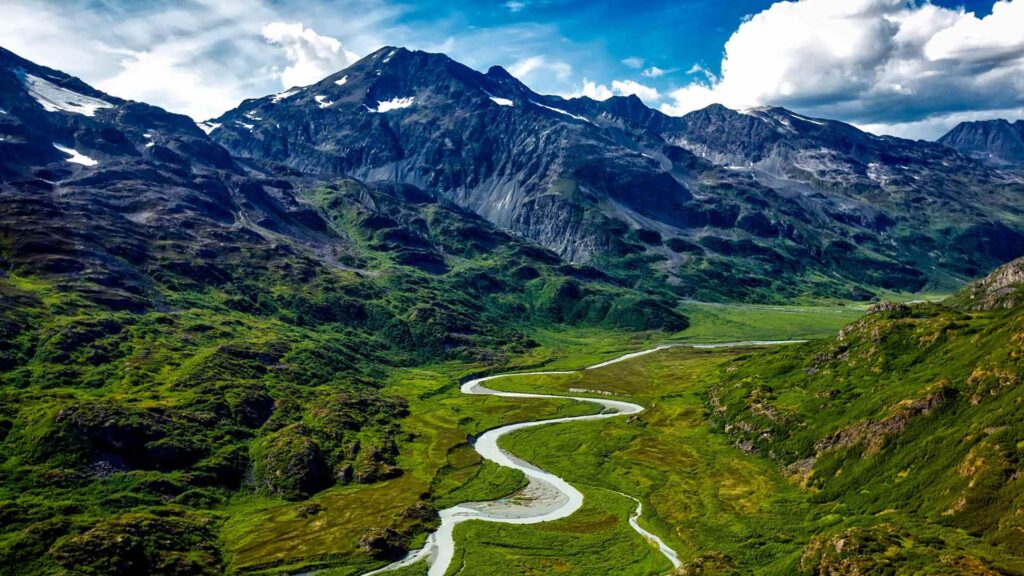
Popular Culture and Media
Alaska’s unique landscapes, adventurous spirit, and rich cultural heritage have made it a popular subject in various forms of media.
Movies, books, and TV shows often portray Alaska in ways that shape public perception and contribute to the state’s nicknames.
Movies and TV Shows
Into the Wild:
- Synopsis: This movie tells the story of Christopher McCandless, who ventures into the Alaskan wilderness in search of a deeper connection to nature.
- Cultural Impact: The film popularized the idea of Alaska as a place for personal discovery and adventure, reinforcing nicknames like “The Last Frontier.”
Northern Exposure:
- TV Show: This television series, set in the fictional town of Cicely, Alaska, showcased the quirky, endearing aspects of Alaskan small-town life.
- Influence on Nicknames: The show highlighted Alaska’s charm and uniqueness, contributing to affectionate nicknames like “The Great Land.”
The Proposal:
- Synopsis: A romantic comedy set in the picturesque town of Sitka, Alaska, which features stunning landscapes and small-town charm.
- Tourism Boost: The movie’s depiction of Alaska’s beauty and lifestyle influenced perceptions and reinforced nicknames associated with natural beauty and serenity.
Books and Literature
Jack London’s Works:
- The Call of the Wild and White Fang: These novels explore the harsh yet captivating wilderness of Alaska, portraying it as a place of both danger and beauty.
- Literary Influence: London’s vivid descriptions contributed to the perception of Alaska as “The Last Frontier” and “The Land of the Midnight Sun.”
James A. Michener’s Alaska:
- Epic Novel: This book covers the history of Alaska from its geological formation to modern times, blending fiction with historical facts.
- Cultural Significance: Michener’s detailed portrayal of Alaska’s evolution highlights its diverse cultures and landscapes, influencing nicknames that celebrate its vast and varied nature.
Music and Songs
Johnny Horton’s “North to Alaska”:
- Song and Movie: This hit song and the subsequent movie brought attention to Alaska’s Gold Rush era, embedding the state’s adventurous spirit in popular culture.
- Nicknames Reinforced: The song’s popularity helped cement Alaska’s image as a place of opportunity and rugged adventure.
Jewel’s Music:
- Alaskan Roots: Singer-songwriter Jewel, who hails from Homer, Alaska, often references her Alaskan heritage in her music.
- Cultural Connection: Her success and frequent mentions of Alaska in interviews and songs highlight the state’s influence on her life and work, reinforcing its cultural significance.
Famous Alaskan Personalities
Sarah Palin:
- Political Influence: The former governor of Alaska and vice-presidential candidate brought national attention to the state.
- Public Perception: Her persona and frequent references to Alaska helped popularize nicknames and reinforce the state’s image as rugged and independent.
Susan Butcher:
- Iditarod Champion: As a four-time winner of the Iditarod Trail Sled Dog Race, Butcher became an iconic figure in Alaskan sports.
- Legacy: Her achievements highlight Alaska’s adventurous spirit and the cultural importance of dog sledding, reinforcing nicknames like “The Last Great Race on Earth.”
Impact of Tourism
Tourist Attractions:
- Key Destinations: Popular tourist destinations like Denali National Park, Glacier Bay, and the Kenai Peninsula attract visitors from around the world.
- Marketing and Branding: Tourism campaigns often use nicknames like “The Last Frontier” and “The Land of the Midnight Sun” to attract visitors, embedding these monikers in popular culture.
Visitor Experiences:
- Personal Stories: Tourists often share their experiences of Alaska’s natural beauty and unique culture, spreading the state’s nicknames through word of mouth and social media.
- Cultural Exchange: Interactions between visitors and locals help perpetuate and evolve the nicknames, ensuring they remain relevant and widely recognized.
Conclusion
Alaska’s nicknames are much more than mere labels; they are rich with history, culture, and the natural beauty that defines this unique state.
Each moniker, from “The Last Frontier” to “The Land of the Midnight Sun,” tells a story that captures the essence of Alaska’s diverse landscapes, adventurous spirit, and deep-rooted heritage.

